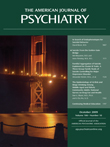Response rates for most CBT or medication studies are approximately 60% (i.e., approximately 40% of treated patients do not respond well with either monotherapy)
(15) . Consequently, expert clinicians often recommend combined treatment as the treatment of choice for major depressive disorder
(16) . With the caveat that time to maximum medical benefit rather than response at a specific time point is the key metric, TADS confirms the wisdom of clinician experience. After 12 weeks of TADS treatment, CBT alone was far less effective than the combination of fluoxetine with CBT or fluoxetine alone, with response rates of 71% for combined fluoxetine plus CBT, 61% for fluoxetine alone, 43% for CBT alone, and 34% for placebo
(11) . Not surprisingly, since the typical endpoint in most CBT trials is 18 weeks rather than 12 weeks, CBT “caught up” with fluoxetine (response rates: fluoxetine, 69%; CBT, 65%), while combined fluoxetine plus CBT reached maximum medical benefit at week 18 (response rate 85%), 3 months earlier than fluoxetine alone or CBT alone, with all treatments converging by week 36 (response rates: combined fluoxetine plus CBT, 86%; fluoxetine, 81%; CBT, 81%)
(12) . Since patients inquire about how soon they will begin to feel better, the finding that combined fluoxetine plus CBT accelerates early response
(17) and maximum medical benefit
(12) relative to fluoxetine alone or CBT alone is particularly meaningful. Likewise, secondary analyses of outcomes at week 12 showed that the combination of CBT and fluoxetine but not fluoxetine alone proved superior to CBT alone and placebo with respect to function and quality of life
(18), remission
(19), acceptability, tolerability, and safety
(20) . Reflecting the order of effect sizes at week 12 (combined fluoxetine plus CBT [effect size=0.98] > fluoxetine [effect size=0.68] > CBT [effect size=0.03]), combined fluoxetine plus CBT proved superior to CBT and placebo on >90% of the 16 possible week-12 endpoints and to fluoxetine on one-half of the 16 possible week-12 endpoints, whereas fluoxetine was superior to CBT and placebo just one-half the time
(5) . Thus, TADS clearly shows that the combination of CBT and fluoxetine significantly accelerates benefits across a wide range of outcomes relative to CBT alone or fluoxetine alone.

